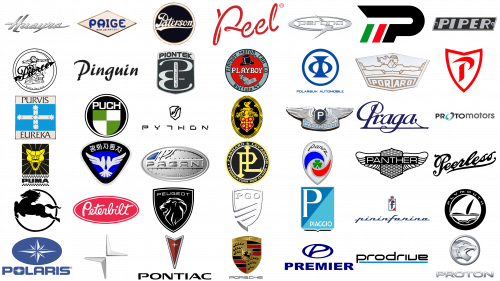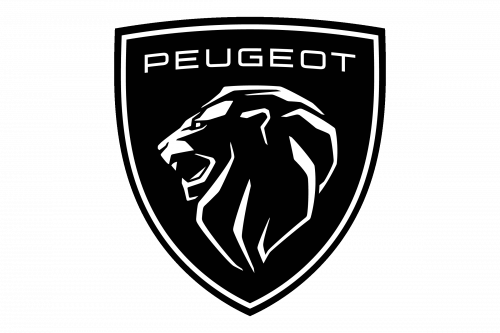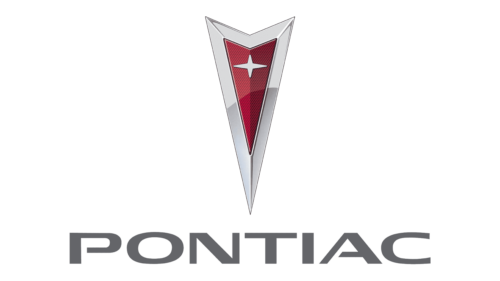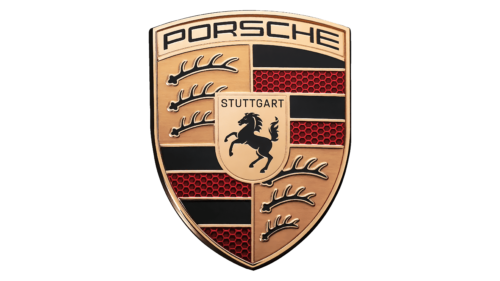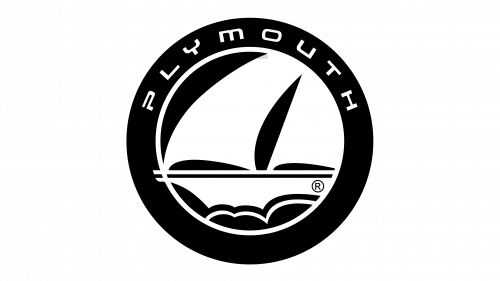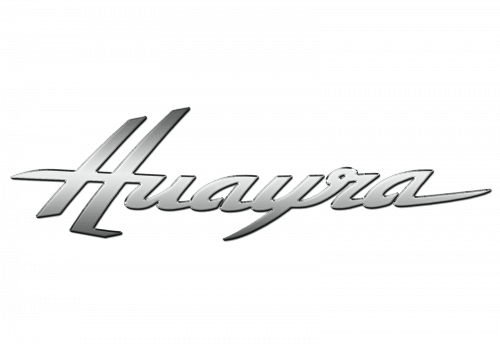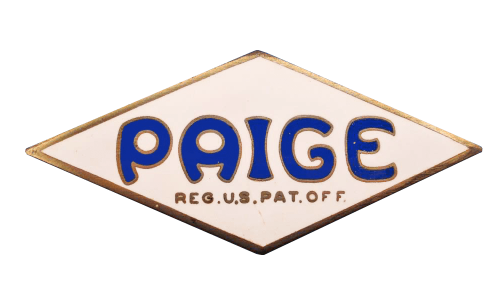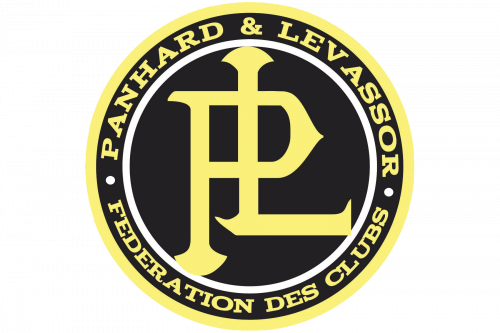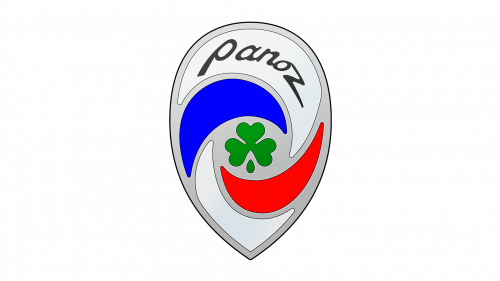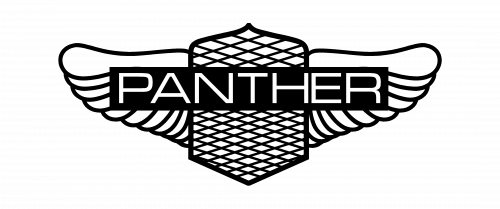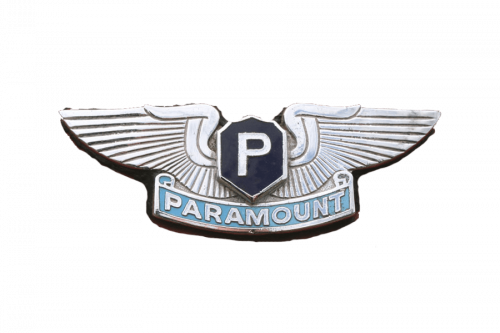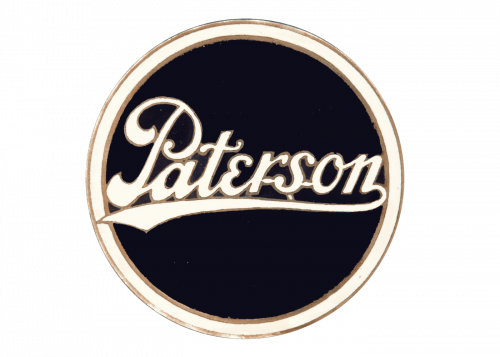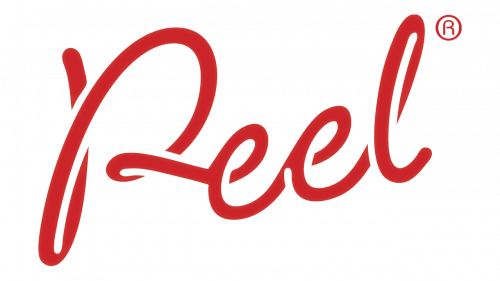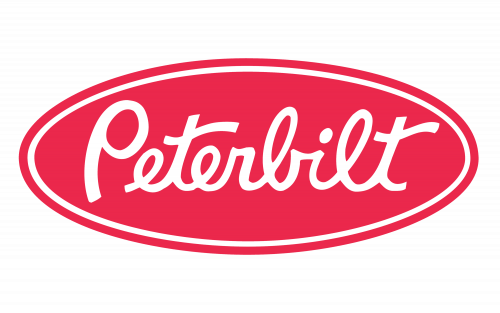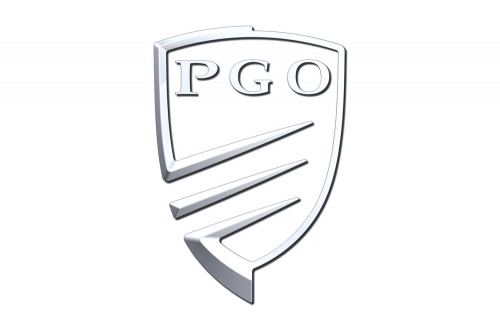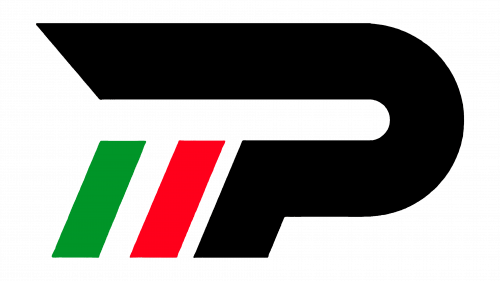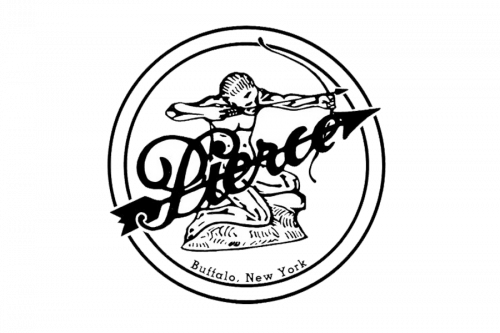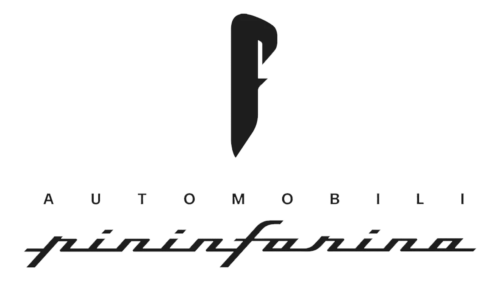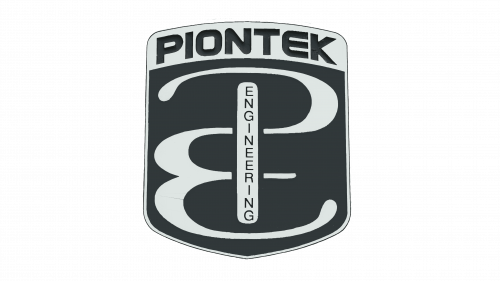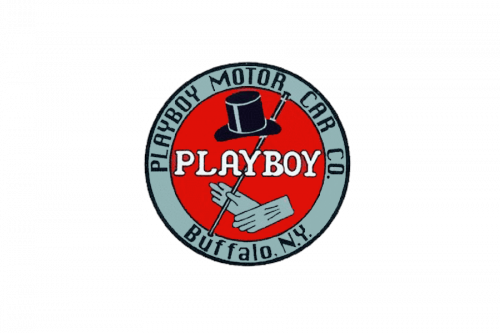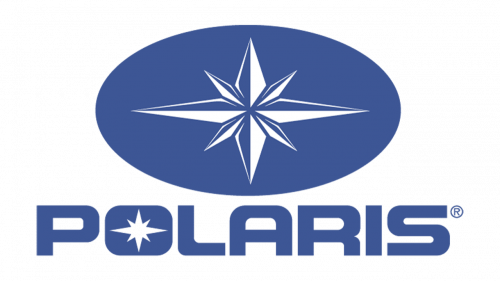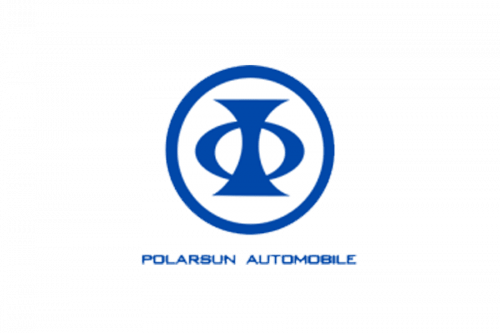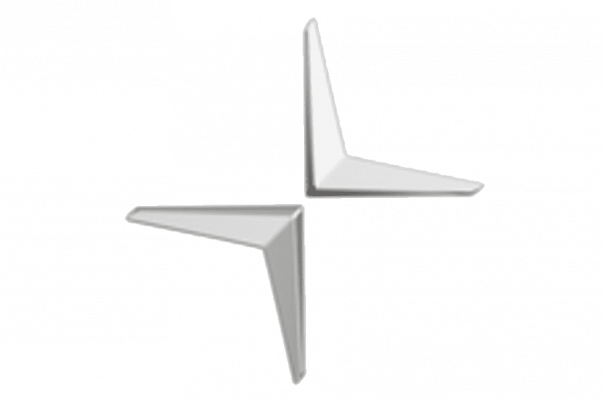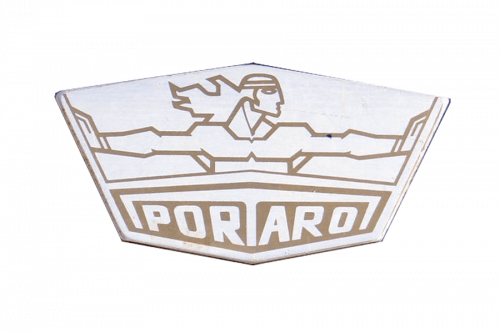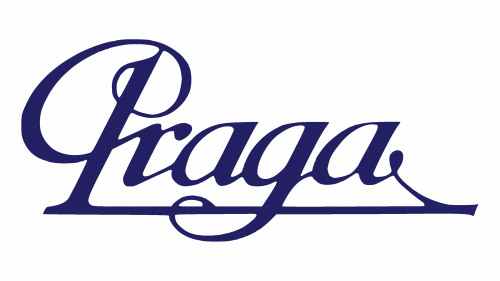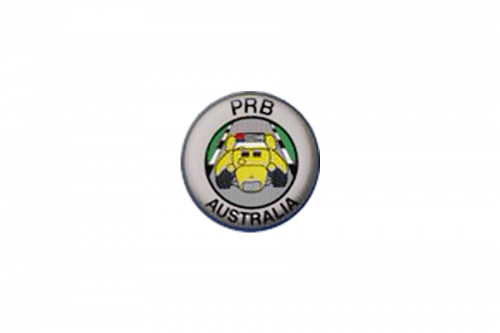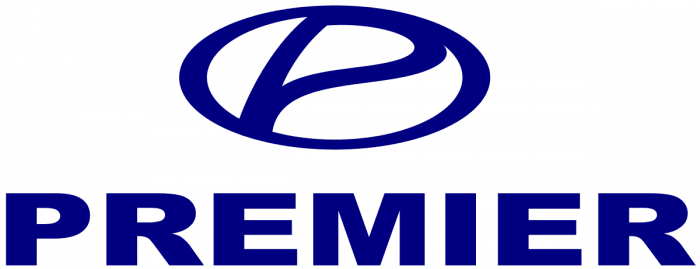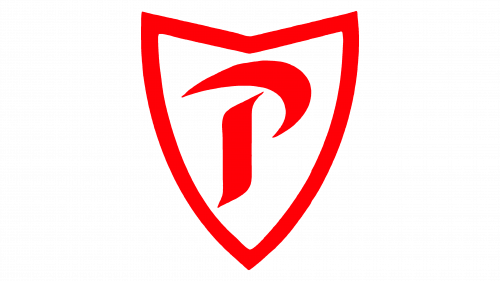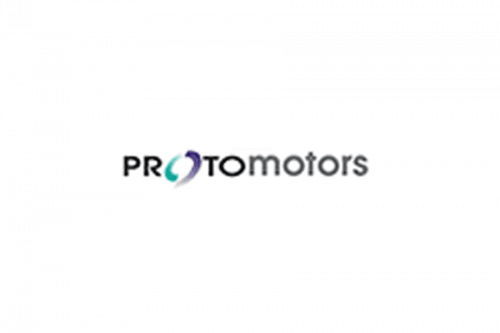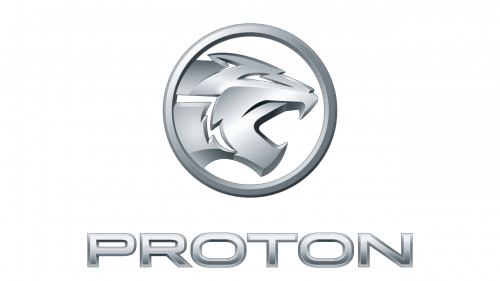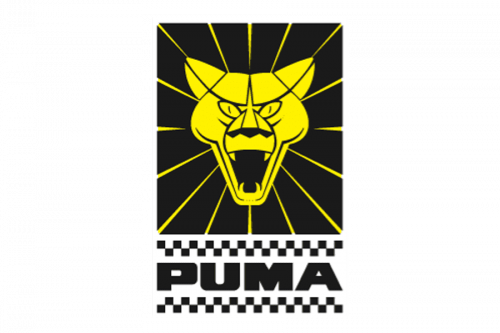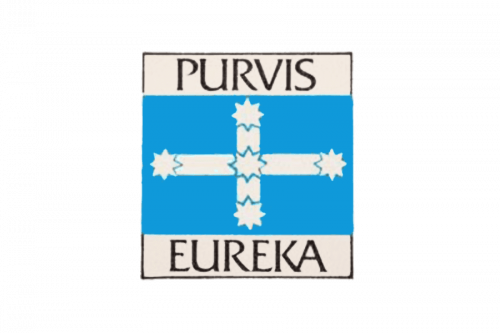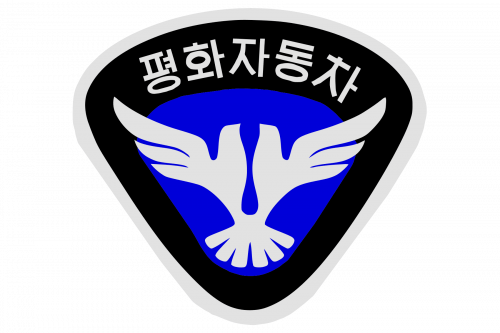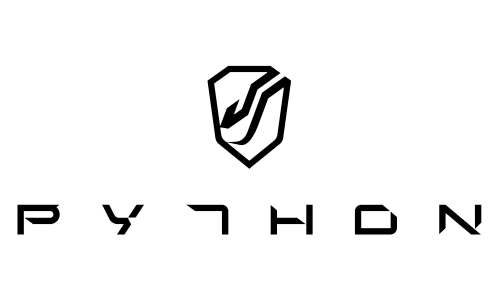Peugeot
Peugeot is one of the oldest French car brands. Their oldest automobile model was released in 1889. Currently, the production is mostly centered on crossovers and vans, but the company produced a variety of passenger cars and sports cars historically. The Peugeot logos famously depict lions. For the longest time, the image of a rampant lion (like in heraldry) was their main image. Now, it’s mildly nuanced outline of the predator’s head, colored white. It’s placed onto a black shield with the company name on the top. The latter is written in white using slim, abrupt letters.
Pontiac
Pontiac was one of the primary brands of General Motors throughout the 20th century. It was an American brand that produced a variety of passenger cars, mostly compact ones. A lot of their products were high-performance or luxury cars, as well. In the 21st century, the company suffered financial difficulties and closed down. Their logo depicts a narrow arrowhead pointing down. Its center was a bright red, outlined with a thick silver frame. Near the top of the red section, they also placed a 4-tip star, colored white.
Porsche
Porsche is the biggest producer of high-performance cars in Germany. The current roster includes largely sports cars and sports crossovers. The company also has a notable presence in motorsport. Their cars, in short, are considered among the best in this category. Their emblem is filled with the symbols of their home city and home region. It’s basically a crest with a coat of arms of Stuttgart (the black horse of a golden shield) with the Wurttemberg symbols around.
Plymouth
Plymouth was one of the big American car brands until 2001. It was owned by Chrysler, which used the brand to establish its presence in the market of smaller, cheaper cars. Compact passenger cars (plus some sports cars) were the core of their production for many years. The last logo of Plymouth depicted a black circle with a white image of a ship inside. It’s a direct reference to ‘Mayflower’, which sailed from Plymouth, which is in England. There’s also the brand’s name, written along the top edge.
Packard
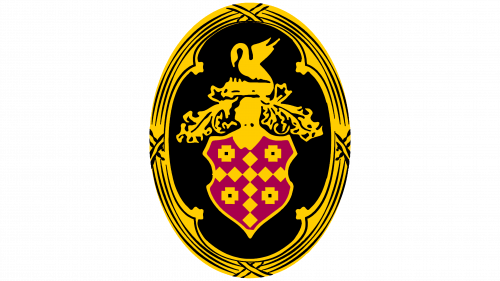
Packard was a prominent car brand in the first half of the 20th century. It was an American company that produced premium vehicles. The classic Packards ended in the 50s, although the brand technically lived longer under successor companies. The Packard’s logo is an upright black oval with a lush crest in the middle. It depicted a shield, crowned by some foliage and a swan on the very top. The colors were exclusively red and gold.
PAG
PAG Automoveis was a carmaker from Brazil, active in 1988-1991. They built a handful of compact vehicles, some based off cars Volkswagen built for Brazil. PAG Nick is probably their most popular model, which was based off Volkswagen Gol, a Brazilian exclusive. The logo depicted a shield with a yellow ray running through it at an angle. This ray divided the emblem into two sections of red. One contained an image of a spiked club, the other – a rampant lion. Both were black.
Pagani
Pagani is a small-volume producer of sports cars from Italy. Currently, they have two car models – streamlined sports car models with carbon polymer. That means they are lighter than usual, granting them a speed advantage. As a logo, they use their name, written inside a narrow oval. It’s stretched sideways to accommodate the entire wordmark. The latter is written in blue, rounded letters.
Pagani Huayra
Pagani Huayra is the second car to be produced by the Italian carmaker Pagani. It’s a lightweight supercar that was among the most powerful model at the time of first release. The production started in 2011, and some variants of it are still in production as of 2021. This particular model has its own emblem, used as a badge. It’s simply the word ‘Huayra’, written in cursive letters. The colors vary between black, white and grey.
Paige
Paige was an American car brand that existed until the 1920s. They produced early premium cars, which also included some high-performance models. In particular, many of their products were roadsters or speedsters, and that essentially means old sports cars. The main logo depicted the brand’s name in big bold letters. They were round, smooth and seemed handmade, resembling scribbles. There were several layers of color: thin black outlines, the white base and black lines in the core.
Pan-Car
Pan-Car was a Greek car manufacturer from 70s to 90s. They specialized in smaller car models, and that included some peculiar designs. Probably their most famous product is a beach buggy, released in ’77. The later products were buggies and crossovers, for the large part. These cars didn’t have any badges or emblems. Neither did the manufacturer.
Panhard
Panhard was a French carmaker, among the first in the country. They produced largely high-performance vehicles until the 60s. Later, the technologies developed by the manufacturer were used by Renault, their new owner. The company’s logo is a grey circle with a yellow frame. Inside, the letters ‘R’ and ‘L’ are placed on the same spot into a fused image. The color scheme for them was an oily black.
Panoz
Panoz is an American producer of cars. It’s been active since 1989, primarily making high-performance vehicles. A good chunk of those are just racing cars of formula and regular variety. But there are also plenty of road sports cars. The brand’s emblem is shaped like a drop, except the round part is above. The frame is silver, and there are also several inner sections divided by silver rims. These sections include several white bits (the top-most with the name on it, for instance), a red one, a blue one and a fully silver central portion with a green clover on it.
Panther
Panther, aka Panther Westwinds, was a British carmaker from 70s until 90s. A typical Panther car is a retro-styled luxury car, although they also made sports cars. The latter were of a more futuristic design, especially the experimental vehicles, like the six-wheeled Panther 6. Their logo depicted a long octagon shape with a moderately-sized wing on each side. A nameplate section was also placed in the middle with the name inside, written in thin sans-serif letters. The color was usually black with brown lines.
Paramount
Paramount Cars was a minor UK brand in the 50s. They produced a roofless roadster called Paramount 1 ½, and that was their biggest release. It didn’t do well, and the production volumes were ultimately miniscule. These cars are a collector’s prize nowadays. The emblem of the company had a small black shield in the middle. In it, they placed the white letter ‘P’, and on the sides there were two big metal wings. Lastly, a curved nameplate with the word ‘Paramount’ on it was present below.
Paterson
Paterson was an American car brand during the 1910s. They were pretty basic cars for the age, but many exhibited roadster qualities, as well. Essentially, there were touring models with some general-use saloons. The manufacturer’s logo looked like the word ‘Paterson’, written at an increasing angle. Font-wise, they used a cursive italic script, but were also very bold and thick. The colors were red for the letters and black for the edges.
Peel
Peel is a niche car brand from Great Britain. It’s extensively famous for producing the smallest car ever in mass production – Peel P50. It’s a microcar that holds 1 person and can even be transported by hand. They also make other vehicles, but these are largely other microcars or prototypes. As a logo, this company uses their name, written in twisting red letters. It looks written with a single string, seeing how the letters are written in a single go.
Peerless
 Peerless was an early American car manufacturer that operated until the 30s. The production revolved around premium vehicles, among the most successful in the country. A lot of these were also roadster or touring variations (high-performance vehicles, in short). The logo depicted this company’s name, written in bold italics. They were written at an angle and usually colored grey. The last letter also extended into the line that went underneath the entire word. Here, they used to write the mottos.
Peerless was an early American car manufacturer that operated until the 30s. The production revolved around premium vehicles, among the most successful in the country. A lot of these were also roadster or touring variations (high-performance vehicles, in short). The logo depicted this company’s name, written in bold italics. They were written at an angle and usually colored grey. The last letter also extended into the line that went underneath the entire word. Here, they used to write the mottos.
Pender-Hertel
Pender-Hertel was one of the earliest automobiles built in Australia. It was similar to the other autos built around the late 19th century. In short, it was basically a self-propelled carriage for two people. Because it was an early automobile, it was essentially a two-man project. This car didn’t have a badge, and the business didn’t have a logo. All the mentions of the company were done in text.
Perana Performance Group
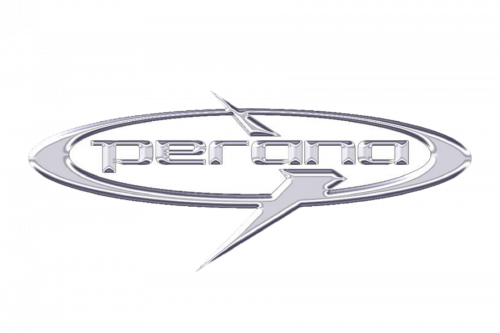
Perana Performance Group is a carmaker from South Africa. This company specializes in small sports cars, although there’s only been 1 model released thus far. It’s called Perana Z-One, and it’s a two-seat grand tourer. Their corporate logo is a silver oval frame with the word ‘Perana’ inside. They wrote it in lowercase sans-serif letters in the same color as a frame. Moreover, there are two sharp strokes coming up and down from the word, which might be wings or an arrowhead, divided by the word.
Pegaso
Pegaso was a Spanish vehicle manufacturer, defunct by 1994. The company built buses, trucks, armored vehicles for the army, as well as several sports cars in their earlier history. The brand and all their assets were bought by Iveco, which also makes buses and trucks. The Pegaso emblem is a horse set in front of the ring. Somewhere around, they’d usually place the name wordmark. The style used there resembles a signature with twisting and linear elements.
Peterbilt
Peterbilt is an American automotive brand, founded in the 30s. What they make is mainly just trucks. The current product lineup includes long haulers and medium-duty trucks. The logo of the company is a bright red oval with an additional layer of red around the rim. The name is written inside in white letters. The font looks like a hand-written cursive script with bold lines.
Perry
Perry was a British car producer during the 1910s. In total, they released two vehicles: a cyclecar (basically a small open-wheel model) and a proper passenger car later. They were generally considered high-performance models by contemporary standards. There was a hood ornament that simply displayed a ring with a horizontal line inside. The company had no official logo. On marketing brochures, the company name was usually written, as ‘Perry Motor Company’.
PGO Automobiles
PGO is a French automobile manufacturer that builds premium cars. Their models are predominantly small luxury sports cars. They are also built by hand and made custom for each client, which explains luxuriousness and small quantity. The PGO emblem is a shield shape, or rather an outline of one. It’s black, with a bolder left side and three claw-like marks going from the left inside the shield. The letters ‘PGO’ are present in the top section, made in a serif font.
Phantom Corsair
Phantom Corsair was a car prototype, designed in USA in the 30s. It was a relatively big sedan with a long, sleek body. The design was extremely ahead of its time, because usually car bodies weren’t as streamlined back then. Because it was a prototype built by a lone engineer, they didn’t have an emblem. Whenever the project was advertised, they simply wrote the name in full. The notable examples have it written in a cursive, italic style.
Piaggio
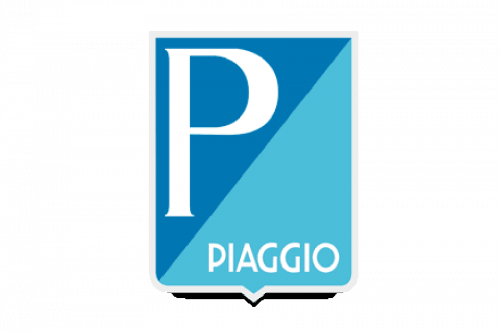
Piaggio is an old Italian company that specializes in scooters and motorcycles. It operated since the late 19th century. There are many brands under their supervision, including the big names, like Vespa. Their logo depicts a square shield figure, divided diagonally into a turquoise and a light blue section. The former holds the word ‘Piaggio’ in white sans-serif near the bottom. The latter is occupied by a big white letter ‘P’.
Picchio
Picchio is an Italian car brand, started in 1989. Most of the products by this company are racing cars of many varieties. Besides that, they also make road sports cars in small quantities. Their logo is a big letter ‘P’, colored black. They removed the upper half of the central bar, added a longer line to the top and also added two strokes of green and red to the left of the letter’s stem. These two imitate the shape of the latter and resemble Italy’s national colors.
Pieper
Pieper was a major Belgian arms maker in the first half of the 20th century. Besides that, they also built at least 1 car in their early years. It was a self-propelled carriage model with a mixed electric-gasoline motor. The company was also known as ‘Bayard’, which was featured on some of their emblems. For instance, there was a logo that looked like a plate of undetermined form. Inside, the word ‘Bayard’ was written in big, slightly gothic letters. Below, a strip of paint contained the words ‘Arms & Ammunitions’, but that’s because it’s what they made most of the time.
Pierce-Arrow
Pierce-Arrow was a pre-WW2 carmaker from America. Most of their lineup consisted of premium cars, but there were other model types as well. The brand was pretty successful and left a lasting impression, but was financially unprofitable in the end. Their logo always used an image of the word ‘Pierced’ literally pierced by an arrow. The style changed over the years, but the primary designs used either cursive letters or big bold characters. The former seems to have been longer in use.
Pinguin
The logo of Pinguin, another automaker from our list, featured a very simple and elegant composition, based solely on the black wordmark in the title case, with the elongated and slightly curved lines of the bold characters, which made the badge look both sophisticated and confident. This logo was a very good find, as it’s a timeless design, which looks equally beautiful on different backgrounds.
Pininfarina
Pininfarina is an Italian company that specializes in car designs. They basically develop coaches and exterior looks for various car brands throughout Europe. That includes companies from Italy and France, primarily. Their logo is an upright rectangle with a blue frame and the insides of white and red. A lowercase letter ‘F’ is written in blue in the central white section. There’s also a red crown above this main part.
Piontek
Piontek was a minor Polish carmaker in the 90s. They specialized in small sports cars, the most notable of which is Piontek Sportech. It was a sleek roadster with 2 seats and a 3-cylinder engine. Piontek’s logo was a shield-shaped badge of mostly black with a metallic top section. On the latter, the name of the brand was placed in bold black letters. The black bit was occupied by what seems like an ampersand with a vertical metallic stripe in front of it. On it, the word ‘Engineering’ was placed in small letters.
Pipe
Pipe was an early carmaker from Belgium that existed until the 30s. Most of their cars were sporting models, high-performance vehicles or just fast cars in general. For instance, they were among the first to incorporate 4V engines into an automobile. There was no company logo, except for the wordmark they used on occasion. It was just the word ‘Pipe’, written in big black letters. The style was a serif font with some skewed proportions and smooth shapes all over.
Pirin
Pirin, also Pirin-Fiat, was a Bulgarian car company. It was formed in 1967 and lasted for several years, mostly producing cars designed by Fiat. These were compact cars – in particular, versions of Fiat 124 and Fiat 850. They used the regular Fiat emblems at the time. These were rounded rectangles of mostly red, with a metal frame. The name was spelled out inside using tall, stretched letters. They were colored white.
Playboy
Playboy was an American car manufacturer in the 50s. The one model they released was a small convertible with 2 doors and a V4 engine. It wasn’t really successful, and not many were produced ultimately. The company’s logo depicted a red circle with the word ‘Playboy’ written in white inside. It was surrounded by the images of a top hat, a walking stick and white gloves. Two wings were then attached to this composition.
Polaris Industries
Polaris is a vehicle manufacturer from America. This company produces a wide array of vehicles, including motorcycles, quads, off-road vehicles and snowmobiles. It’s basically a niche producer of utility vehicles, although a very successful one. The logo consists of a wordmark part and an emblem. The wordmark just displays the name, written in big bold letters, colored blue. The center space in the ‘O’ is replaced with a white silhouette of a polar star. The same image is present on the emblem, except there’s an oval around it.
Polarsun Automobile
Polarsun was a Chinese car brand that consists of vans and crossovers for the most part. It’s defunct as of 2018, but in their time they’ve released a handful of models. A lot of them were just Japanese models with slight modifications. The logo depicts the name of the company, written in big Chinese glyphs and then repeated in English underneath. Next to them is the emblem – the first glyphs of the native name, but with thicker tips and put inside a ring. Everything was in blue.
Polestar
Polestar is a Swedish brand, owned partly by Volvo. This project concentrates on the development of hybrid and electric cars. They’ve already two such cars: one is a hybrid sports car, and the other – an electric executive car. The logo looks like a 4-tip star, colored white and grey. Well, it would be one, but they split it in to and shifted both parts in opposite sides slightly. So, it’s just two pairs of lines floating next to each other.
PORTARO
PORTARO is the name for the 4×4, developed jointly by Portuguese and Romanians. There were many versions of these cars, but they varied little. Most of these were created in the 70s. The PORTARO logo uses the brand’s name, written in big letters with sizes decreasing near the tips. Notably, the top bar of the letter ‘T’ extends above all of these other letters, and the tips then turn down to encompass the first and last letters. This wordmark is then placed into an octagon-shaped frame.
Praga
Praga is a Czech carmaker, founded in 1907. The majority of vehicles built by them are either passenger cars or trucks. The former, in particular, have mostly been of sporting variety as of late. The company’s logo is just the word ‘Praga’, written in black letters. In addition, there’s also a line going beneath the entire word. The font is a cursive italic style with a lot of twists and turns.
PRB
PRB is a name of the Australian manufacturer of sports and racing cars. They have been doing it since the 70s, and the cars they created resemble the older Lotus models. That is, they are narrow, one- or two-seat cars with partly open wheels. Many of these are used extensively in racing. The one emblem they have uses a grey circle as basis. The central section depicts one of their cars full-face, mainly colored yellow. The frame bit around is where they put the name – ‘PRB Australia’ – in black.
Premier Ltd
Premier is an Indian car assembler, founded in the 1940s. They don’t develop their own vehicles but build the cars of other brands. That includes small and mid-sized vehicles from Fiat, Plymouth, Renault and some other. The emblem depicts an oval with a letter ‘P’ stuck inside. It resembles a noose, actually, because of its excessive fluidity and smoothness. The coloring is just navy blue.
Prince Motor Company
Prince Motor is a Japanese car brand, and a former manufacturer. They produced their own cars – racing, luxury and utility vehicles – until the 60s. After that, Nissan incorporated them into their own production, where they continued to build their cars and develop new models. The logo is still used on some cars of theirs. It’s a red shield with the white core. In the middle, there is a letter ‘P’ that consists of two smooth strokes of red paint, much like the traditional Japanese glyphs.
Prodrive
Prodrive is a British company that mostly builds or modifies racing cars for other brands. They helped construct cars for Aston Martin, Subaru, Porsche and many other companies. There were also attempts at building their own road sports car, but that went nowhere. The usual Prodrive logo uses their name, written in black lowercase letters. The font is a smooth, round style. There is also a blue line going all the way beneath the word.
Proto Motors
Proto Motors was a South Korean company, operating from 1997 until its defunct in 2017. They manufactured convertibles, limousines, sports cars, parts for them, and also coaches for vehicles. Shortly before the defunct, they also started to redesign and recreate existing models, developing their electric variants. The company logotype depicted their name on a white background. The first ‘Proto’ part had a bold black sans serif font with a custom ‘O’ character. The ‘Motors’ word used a gray typeface.
Proton
Proton is the largest automotive manufacturer in Malaysia. They produce various types of vehicles, from compact cars to motorcycles. Most of their cars are made on basis of local and company-made components, though they also produce rebranded foreign cars. The company logo is a metallic white circle with a head of a tiger inside. Below it, we can see the name. It’s written in a same-styled sans-serif typeface.
Puch
Puch is an engineering firm, located in Austria. Since Puch appeared in 1899, they mostly produce compact automobiles, trucks and racing cars. In the list of their products are bicycles, motorcycles and mopeds, as well as parts for them all. The brand logo shows us the white brand name in an angular sans serif typeface. Below it, we can see the checkered white and green shield. All this is placed on a black circle with a white line.
Puli
Puli was a microcar made in Hungary in 80s-90s. It was assembled using foreign components, available in the country at that time. It was equipped with a diesel or electric engine, depending on the variation. There are various version of this car, modified for off-road driving, racings, etc. You can find the versions with no roof or with elongated body. This vehicle was manufactured by an automotive manufacturer Hodgep, a large state-owned company, which is now ceased.
Puma
Puma is a Brazilian car company. They specialize in making high-performance sports cars, buses and heavy trucks. Most of their luxury cars are equipped with powerful engines and extra-light bodies, which allows them to accelerate maximum velocities. Their logotype is a yellow head of a puma, which have various yellow lines coming from it. The puma head is drawn on a black square. Below, we can see the black brand name, framed from below and above by checkered black pattern.
Purvis Eureka
Purvis Eureka was an Australian sports car, produced in 70s-90s. The car had a coupe body, made using extra-light materials. It also got a powerful diesel engine that allowed the car to accelerate maximum velocities. There were several versions, which had different body forms, engines and features. Eureka was sold both as an assembled car and a kit of vehicle components. It was manufactured by Purvis Cars, a large automotive company in the country.
Pyeonghwa Motors
Pyeonghwa is a North Korean automotive company. They make various vehicles, including compact cars, trucks, buses, etc. Most of their automobiles are made on basis of components from China of Vietnam. Their logotype a triangle with rounded corners. It is split into three areas, colored white, blue and black. On it, we can see the brand name and an image of a bird.
Python
Python was an automobile, designed by Ford in mid-60s. It was a sports car, produced to replace British competing cars. Python had a compact and minimalistic coupe body. The material used during the car construction was plastic. In collaboration with powerful diesel engine, it helped the vehicle to accelerate high velocities. There have been seven of these cars identified.


